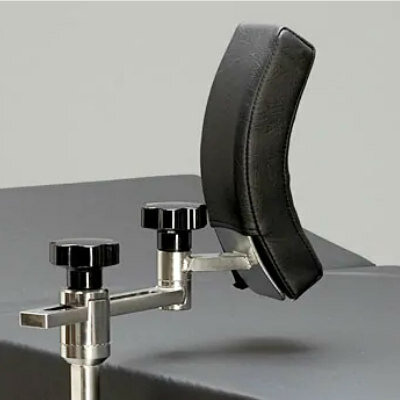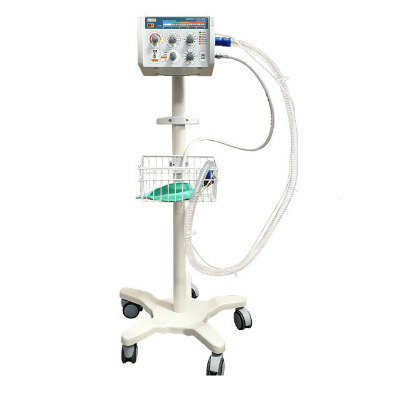Stroke Patients Recover Arm Use with Virtual Reality 
|
By HospiMedica International staff writers Posted on 29 Jun 2015 |
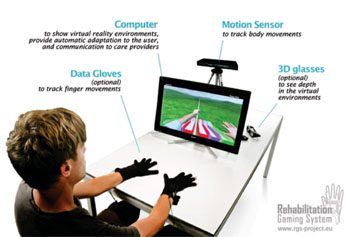
Image: The Rehabilitation Gaming System (RGS) (Photo courtesy of Universitat Pompeu Fabra).
A new study suggests that using virtual reality could assist arm rehabilitation in stroke patients and increase their confidence in using their paralyzed arm.
Researchers at Universitat Pompeu Fabra (UFP; Barcelona, Spain), Hospital Universitari Vall d'Hebron (Barcelona, Spain), and other institutions conducted a small pilot study in 20 hemiparetic stroke patients that played a Rehabilitation Gaming System (RGS) using a Microsoft Kinect sensor and optional gloves to track their movement. The system allowed the users to control a virtual body via their own movements on a computer screen, as seen from a first-person perspective.
The participants were asked to perform various tasks in a virtual world. In some of these tasks, the researchers enhanced the paretic limb’s virtual movements, making it appear faster, more accurate, and easier to reach the target on screen. These amplifications were introduced and suppressed in a gradual fashion to keep participants unaware of the manipulations. Following these manipulations, the participants’ performance in the unamplified task was recorded, including the likelihood of them using their paretic limb.
The researchers found that that there was a significantly higher probability that the patient would select their paretic limb for reaching towards a virtual target after the intervention, even when there was no amplification of movement in the session, and with the patient unaware of the previous session’s manipulation. After experiencing the amplification of the paretic limb in virtual reality, the patients also performed wider pointing movements towards targets appearing in the non-paretic workspace. The study was published in the June 2015 issue of Journal of NeuroEngineering and Rehabilitation.
“After enhancement of movement, patients started using their paretic limb more frequently. This suggests that changing patients' beliefs on their capabilities significantly improves the use of their paretic limb,” said lead author Belén Rubio, PhD, of the synthetic, perceptive, emotive, and cognitive systems lab at UFP. “This therapy could create a virtuous circle of recovery, in which positive feedback, spontaneous arm use, and motor performance can reinforce each other.”
Following stroke, loss of neural tissue induces drastic neurophysiological changes that often result in cognitive and motor impairments, such as hemiparesis; to counteract these deficits, patients tend to introduce compensatory movements, such as over-utilizing their non-paretic limb. Although these compensatory strategies may immediately improve functional motor performance in daily living or reduce the burden of using the paretic limb, a long period of non-use of the affected limb can lead to further loss of neural and behavioral function.
Related Links:
Universitat Pompeu Fabra
Hospital Universitari Vall d'Hebron
Researchers at Universitat Pompeu Fabra (UFP; Barcelona, Spain), Hospital Universitari Vall d'Hebron (Barcelona, Spain), and other institutions conducted a small pilot study in 20 hemiparetic stroke patients that played a Rehabilitation Gaming System (RGS) using a Microsoft Kinect sensor and optional gloves to track their movement. The system allowed the users to control a virtual body via their own movements on a computer screen, as seen from a first-person perspective.
The participants were asked to perform various tasks in a virtual world. In some of these tasks, the researchers enhanced the paretic limb’s virtual movements, making it appear faster, more accurate, and easier to reach the target on screen. These amplifications were introduced and suppressed in a gradual fashion to keep participants unaware of the manipulations. Following these manipulations, the participants’ performance in the unamplified task was recorded, including the likelihood of them using their paretic limb.
The researchers found that that there was a significantly higher probability that the patient would select their paretic limb for reaching towards a virtual target after the intervention, even when there was no amplification of movement in the session, and with the patient unaware of the previous session’s manipulation. After experiencing the amplification of the paretic limb in virtual reality, the patients also performed wider pointing movements towards targets appearing in the non-paretic workspace. The study was published in the June 2015 issue of Journal of NeuroEngineering and Rehabilitation.
“After enhancement of movement, patients started using their paretic limb more frequently. This suggests that changing patients' beliefs on their capabilities significantly improves the use of their paretic limb,” said lead author Belén Rubio, PhD, of the synthetic, perceptive, emotive, and cognitive systems lab at UFP. “This therapy could create a virtuous circle of recovery, in which positive feedback, spontaneous arm use, and motor performance can reinforce each other.”
Following stroke, loss of neural tissue induces drastic neurophysiological changes that often result in cognitive and motor impairments, such as hemiparesis; to counteract these deficits, patients tend to introduce compensatory movements, such as over-utilizing their non-paretic limb. Although these compensatory strategies may immediately improve functional motor performance in daily living or reduce the burden of using the paretic limb, a long period of non-use of the affected limb can lead to further loss of neural and behavioral function.
Related Links:
Universitat Pompeu Fabra
Hospital Universitari Vall d'Hebron
Latest Critical Care News
- New Approach to Visualizing Blood Pressure Data Can Help Better Manage Hypertension Patients
- Breakthrough AI Technology Accurately Assesses Heart Failure Severity
- Smart Bandage Monitors Chronic Wounds in Human Patients
- AI Identifies Patients with Increased Lung Cancer Risk Up To 4 Months Earlier
- Next Gen Hemodynamic Monitoring Solution Provides AI-Driven Clinical Decision Support
- AI Algorithm Identifies High-Risk Heart Patients
- Wearable Glucose Monitor Offers Less Invasive Approach to Assessing Diabetes Risk
- Wireless, Self-Powered Smart Insole to Improve Personal Health Monitoring
- Novel Cannula Delivery System Enables Targeted Delivery of Imaging Agents and Drugs
- Ingestible Smart Capsule for Chemical Sensing in the Gut Moves Closer to Market
- Novel Intrabronchial Method Delivers Cell Therapies in Critically Ill Patients on External Lung Support
- Generative AI Technology Detects Heart Disease Earlier Than Conventional Methods
- Wearable Technology Predicts Cardiovascular Risk by Continuously Monitoring Heart Rate Recovery
- Wearable Health Monitoring Device Measures Gases Emitted from and Absorbed by Skin
- Groundbreaking Technology Rapidly Detects Airborne Influenza Viruses
- Handheld Device Could Transform Heart Disease Screening
Channels
Surgical Techniques
view channel
DNA Origami Improves Imaging of Dense Pancreatic Tissue for Cancer Detection and Treatment
One of the challenges of fighting pancreatic cancer is finding ways to penetrate the organ’s dense tissue to define the margins between malignant and normal tissue. Now, a new study uses DNA origami structures... Read more
Pioneering Sutureless Coronary Bypass Technology to Eliminate Open-Chest Procedures
In patients with coronary artery disease, certain blood vessels may be narrowed or blocked, requiring a stent or a bypass (also known as diversion) to restore blood flow to the heart. Bypass surgeries... Read more
Intravascular Imaging for Guiding Stent Implantation Ensures Safer Stenting Procedures
Patients diagnosed with coronary artery disease, which is caused by plaque accumulation within the arteries leading to chest pain, shortness of breath, and potential heart attacks, frequently undergo percutaneous... Read more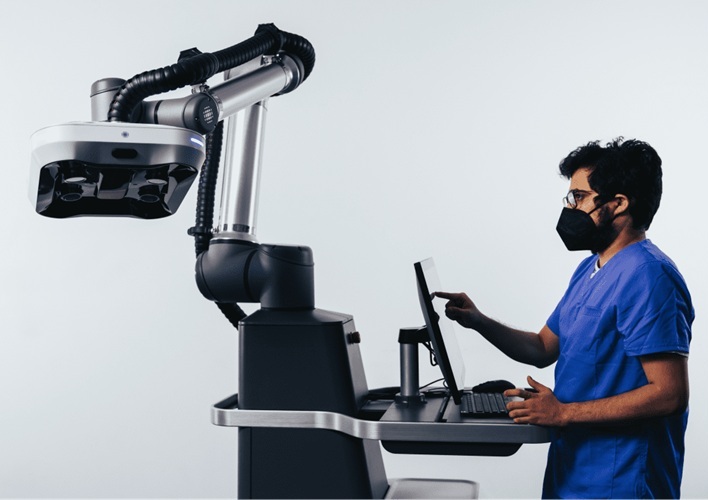
World's First AI Surgical Guidance Platform Allows Surgeons to Measure Success in Real-Time
Surgeons have always faced challenges in measuring their progress toward surgical goals during procedures. Traditionally, obtaining measurements required stepping out of the sterile environment to perform... Read morePatient Care
view channel
Portable Biosensor Platform to Reduce Hospital-Acquired Infections
Approximately 4 million patients in the European Union acquire healthcare-associated infections (HAIs) or nosocomial infections each year, with around 37,000 deaths directly resulting from these infections,... Read moreFirst-Of-Its-Kind Portable Germicidal Light Technology Disinfects High-Touch Clinical Surfaces in Seconds
Reducing healthcare-acquired infections (HAIs) remains a pressing issue within global healthcare systems. In the United States alone, 1.7 million patients contract HAIs annually, leading to approximately... Read more
Surgical Capacity Optimization Solution Helps Hospitals Boost OR Utilization
An innovative solution has the capability to transform surgical capacity utilization by targeting the root cause of surgical block time inefficiencies. Fujitsu Limited’s (Tokyo, Japan) Surgical Capacity... Read more
Game-Changing Innovation in Surgical Instrument Sterilization Significantly Improves OR Throughput
A groundbreaking innovation enables hospitals to significantly improve instrument processing time and throughput in operating rooms (ORs) and sterile processing departments. Turbett Surgical, Inc.... Read moreHealth IT
view channel
Printable Molecule-Selective Nanoparticles Enable Mass Production of Wearable Biosensors
The future of medicine is likely to focus on the personalization of healthcare—understanding exactly what an individual requires and delivering the appropriate combination of nutrients, metabolites, and... Read more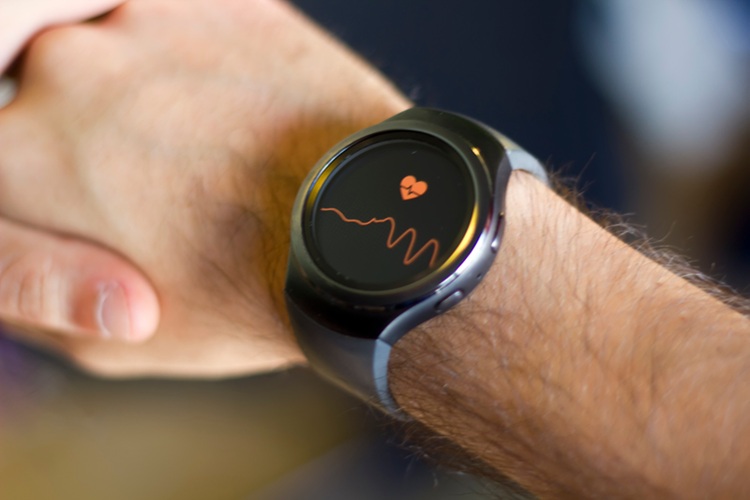
Smartwatches Could Detect Congestive Heart Failure
Diagnosing congestive heart failure (CHF) typically requires expensive and time-consuming imaging techniques like echocardiography, also known as cardiac ultrasound. Previously, detecting CHF by analyzing... Read moreBusiness
view channel
Expanded Collaboration to Transform OR Technology Through AI and Automation
The expansion of an existing collaboration between three leading companies aims to develop artificial intelligence (AI)-driven solutions for smart operating rooms with sophisticated monitoring and automation.... Read more








